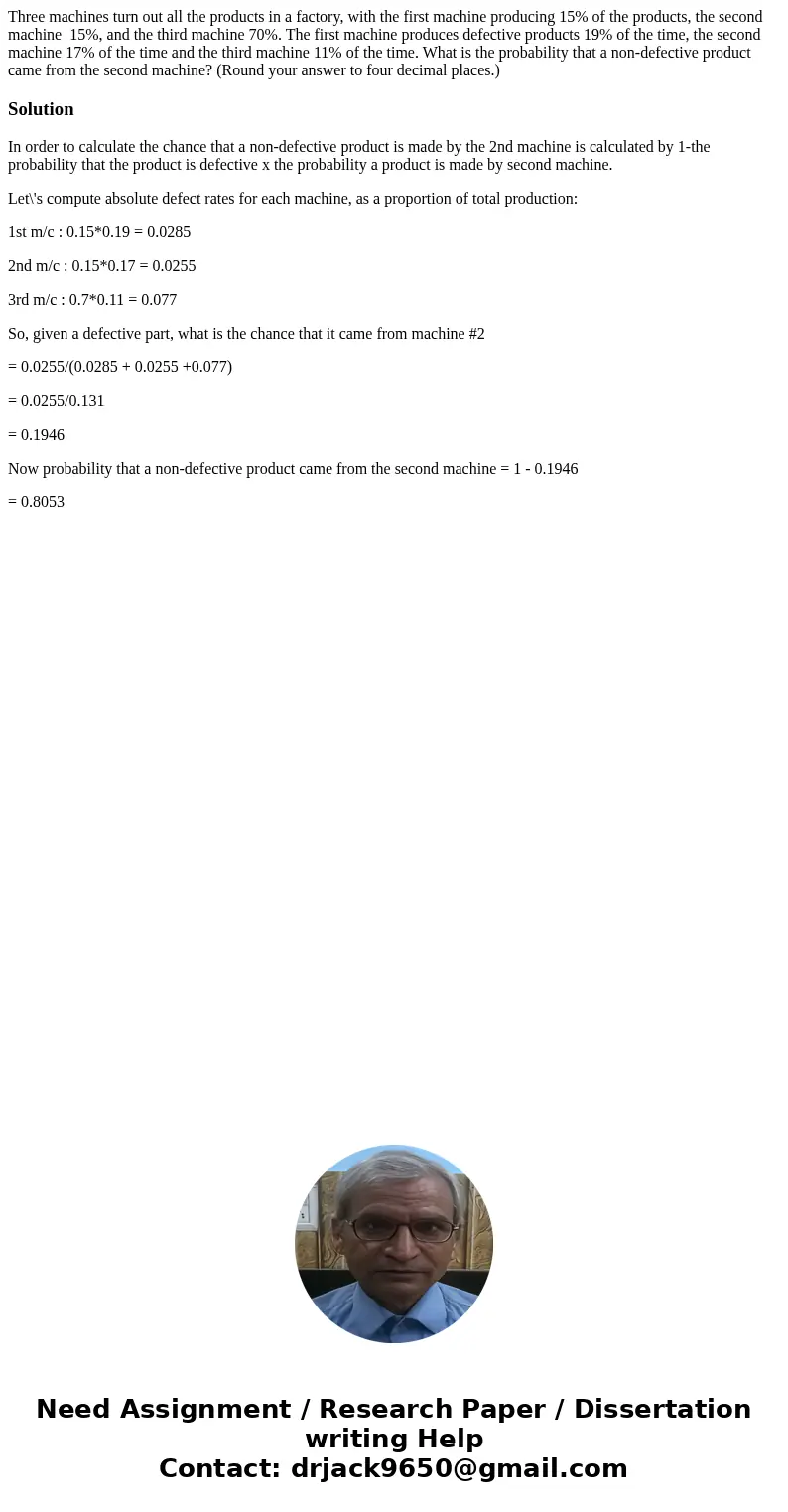Three machines turn out all the products in a factory with t
Three machines turn out all the products in a factory, with the first machine producing 15% of the products, the second machine 15%, and the third machine 70%. The first machine produces defective products 19% of the time, the second machine 17% of the time and the third machine 11% of the time. What is the probability that a non-defective product came from the second machine? (Round your answer to four decimal places.)
Solution
In order to calculate the chance that a non-defective product is made by the 2nd machine is calculated by 1-the probability that the product is defective x the probability a product is made by second machine.
Let\'s compute absolute defect rates for each machine, as a proportion of total production:
1st m/c : 0.15*0.19 = 0.0285
2nd m/c : 0.15*0.17 = 0.0255
3rd m/c : 0.7*0.11 = 0.077
So, given a defective part, what is the chance that it came from machine #2
= 0.0255/(0.0285 + 0.0255 +0.077)
= 0.0255/0.131
= 0.1946
Now probability that a non-defective product came from the second machine = 1 - 0.1946
= 0.8053

 Homework Sourse
Homework Sourse